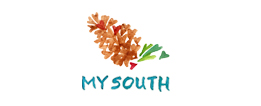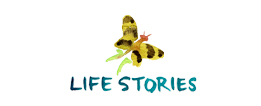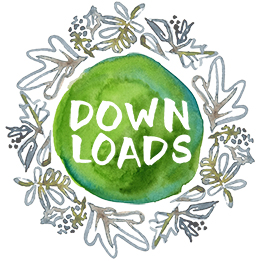I’ve been thinking about books a lot lately. I just finished reading Just Kids by Patti Smith, a memoir of her life and friendship with Robert Mapplethorpe. What is it about books, whether mysteries or memoirs or monographs, that have such power to move me? Just Kids was at times poignant, at times an exercise in frustration, at times an obscure literary lesson and at times a huge 60s and 70s cocktail party. But, at the end, when the final scenes for Patti and Robert were played out before his death, I was moved to tears. It was such an unavoidable description of the realities of goodbye and hello and time spent and time lost and unexpected outcomes and enduring soul kinship. And, since I’m writing this to the backdrop of Little Drummer Boy and Baby Girl giggling and playing together, I’m realizing it was also a story of life lived and how it moves on. Quite a range of thinking from just 279 pages.
I’m not sure I have ever in my life been able to read words on a page without thinking about them. Yes, I sometimes realize at bedtime that I’ve reached the end of my 647th encounter with Corduroy or Harry the Dirty Dog or The Tale of Peter Rabbit without remembering the actual act of speaking the words. But, the first time I read them I thought about them. The first time I read them I engaged in some strange process of extracting personal reactions or obscure life lessons. Many of the books my children read are copies I had as a child myself. I’m sure my first time reading them as a parent produced different thoughts than my times reading them as a youngster. That’s just how it goes.
I’m in the midst of deciding on the next book to read and culling down a list of possibilities gleaned from way too much time spent with NPR email alerts and the New York Times Book Review. I don’t know why I always get indecisive with this process. It’s not like I can’t put a book down and pick up another one at my leisure. Sometimes the decision represents some tantalizing combination of being afraid a book won’t live up to its billing and of being afraid it will so surpass its billing that it will haunt me for months or years. Perhaps I’m overthinking. While I decide and reign myself in, I thought I’d offer up a Tuesday Twenty list of books I’d be delighted to RE-read. I just read an interview in the LA Times with John McPhee, the author and long-time columnist for The New Yorker. The article was about his upcoming book of personal essays (just another addition to the list of reading possibilities *sigh*), and in it, he offered some sage insight about being a reader, despite his ample experience being the writer in the equation. He observed that “the creative person in this process is the reader, by a long shot. The writer supplies three or four words, but the reader makes the picture.” These books have afforded me the opportunity to paint a unique picture on one or more occasions in my reading. And, I’m convinced another reading would give me an entirely new view. The power of a good book.
1. The Age of Innocence by Edith Wharton
Some folks tire of the intricate detail found in Edith Wharton’s work, but I really enjoy the description of New York society during the turn of the 20th Century. It’s a toss-up between this more popular novel and The House of Mirth. Both have such a wrenching view of women living outside the constraints of the trappings of that society.
2. Emma by Jane Austen
Fills my latent romantic tendencies. Downright funny at times, and there’s a happy ending!
3. Ellen Foster by Kaye Gibbons
The most poignant part in the first reading: Ellen thinks her last name is Foster because people always refer to her as “that Foster child.” Hers is a story of triumph and Kaye Gibbons’ Southern stream of consciousness is remarkable, if you like that sort of thing. I’d read any of her books again. Seriously.
4. Girl with a Pearl Earring by Tracy Chevalier
Vermeer. Enough said. But, the fictional tale surrounding the moments captured in one of his most astounding works is bittersweet, eloquent and artistic.
5. Lucy Gayheart by Willa Cather
Years later, I’m still thinking about the bittersweet end of this beautiful novel about a woman who wants so much more than what the culture she lives in is willing to give her.
6. A Woman of Independent Means by Elizabeth Forsythe Bailey
Told entirely in letters, this story of a woman’s powerful spirit made me want to go out and buy stationery. The lost art of letters never looked so attractive.
7. Little Women by Louisa May Alcott
I can’t tell you how many times I read this as a child. It still stirs me, both from the family story, the independence of “Jo” and my own memories of reading it.
8. 31 Hours by Masha Hamilton
Published just last year, I’m astounded by the restraint in this book, by the new perspective on terrorism, by the mother’s heart described, by the uncommon experiences found in the common subway.
9. Little House in the Big Woods by Laura Ingalls Wilder
Laura Ingalls was my best friend in elementary school. It would be good to see her again.
10. The Lively Art of Writing by Lucille Vaughan Payne
This little book was my 9th grade English textbook. Thank you, Mrs. Armstrong. I still use the principles today. And, I still choose when to lovingly ignore them.
11. Invisible Cities by Italo Calvino
I read this book way back in college, and I think explored the evolution of cities in a project centered on it. It is an amazing glimpse of the fragmented sociology of kingdoms told by a fictional Marco Polo. The young European explorer offers Kublai Khan, the aging asian emperor, tales of the cities throughout his empire. As it turns out, the stories all describe the same city — a lesson in points of view.
12. The Great Gatsby by F. Scott Fitzgerald
No elaboration required.
13. Midnight in the Garden of Good and Evil by John Berendt
An unforgettable non-fiction account of one reporter’s indoctrination into all things Southern and a beautiful and quirky account of the mystery and crazy culture of Savanah, GA. Best tombstone epitaph: a bench at the grave of Conrad Aiken is inscribed with “cosmos mariner, destination unknown.”
14. Night by Elie Wiesel
You may have seen the account of my first reading of this memoir. I still shrink back from the book, but crave the undeniable reality check on human nature it offers.
15. Creating a Beautiful Life by Alexandra Stoddard
Every time I look at this book, I’m encouraged to pay attention to the little things and value beauty in my life. Beauty, as I behold it, is important and it’s not that hard to achieve.
16. On the Occasion of My Last Afternoon by Kaye Gibbons
A very moving tale of a woman during the Civil War era. In my first reading, I was compelled to record Emma Garnett’s thoughts on seeing the jarring, but numbing realities of that war through photos, and how it would have been more powerful in paintings…
“If Monet or Manet or Toulouse-Lautrec had performed the scenes of battle, I might have been urged toward emotion, for the horror would have quivered on the surface of the page and beckoned my mind to follow attendant sensations deeper and deeper to the core, down into the true, wasted, stupid, futile blasphemy of that conflict.”
17. The Screwtape Letters by C.S. Lewis
An example of C.S. Lewis’ creativity and a treatise on the nature of evil told from the perspective of a young devil in training.
18. The Divine Romance by Gene Edwards
A beautiful telling of the story of God–his creation, his work, his redemption–expressed as a love story. The very first page describes two essentials of God’s existence in the pre-dawn of creation. God was alone. And, God was love. A profound paradox of coexistence for both God and man — the lover without the loved.
18. My Mississippi by Willie Morris
Who can escape the words of Willie Morris. His thoughts about his (and my) home state are moving, steeped in memory and the fervor of the unique life here. His essay is accompanied by a collection of photos of the state taken by his son.
20. The Shipping News by Annie Proulx
The first descriptive word that came to mind when I read this book originally was “ethereal.” Its descriptions of characters and of the Newfoundland area were beautiful. The journey of a man coming to grips with his own history and finally learning to love was like a deep breath.

 Hello & welcome! I’m Haley Montgomery, and I’m the designer and owner of
Hello & welcome! I’m Haley Montgomery, and I’m the designer and owner of 















